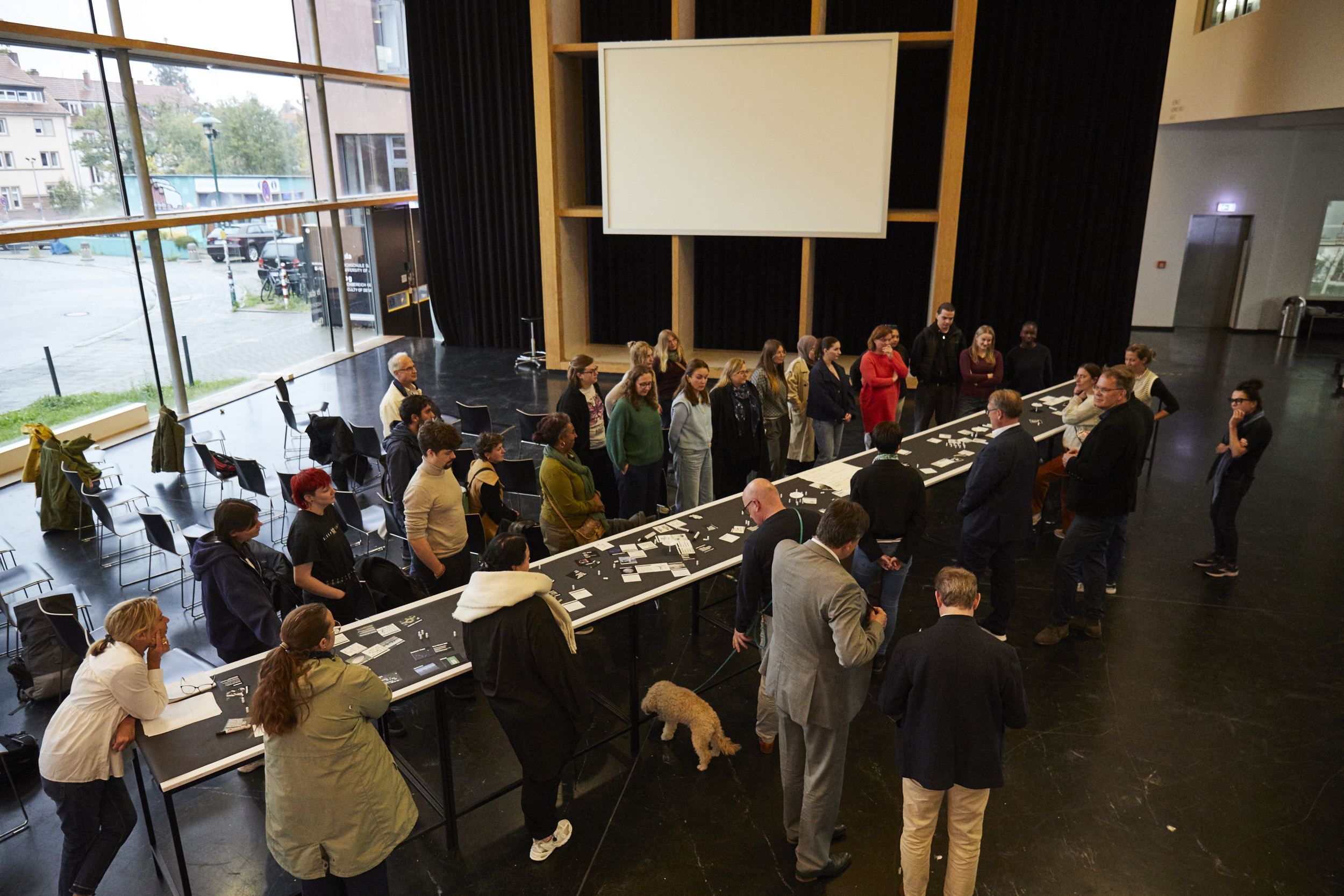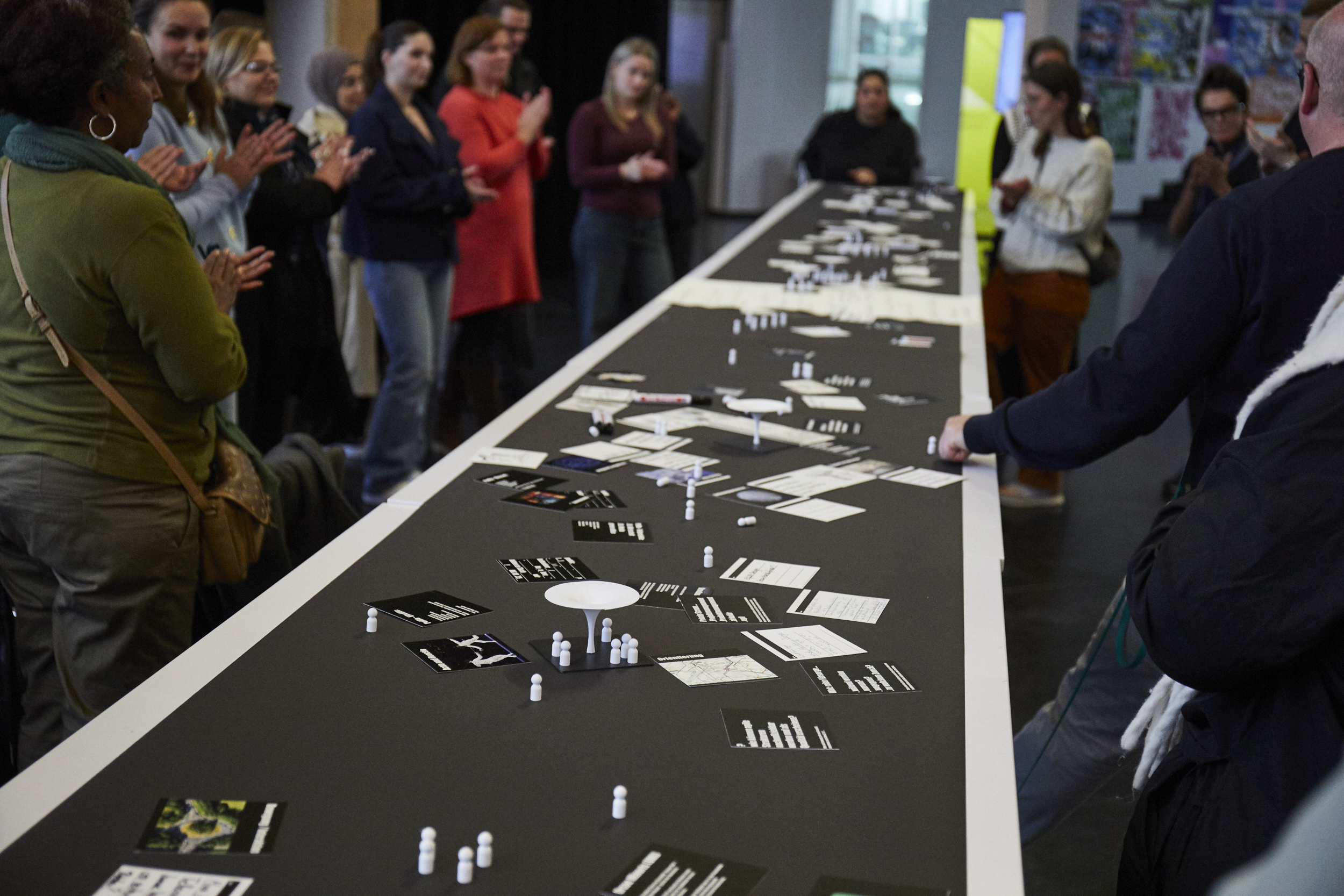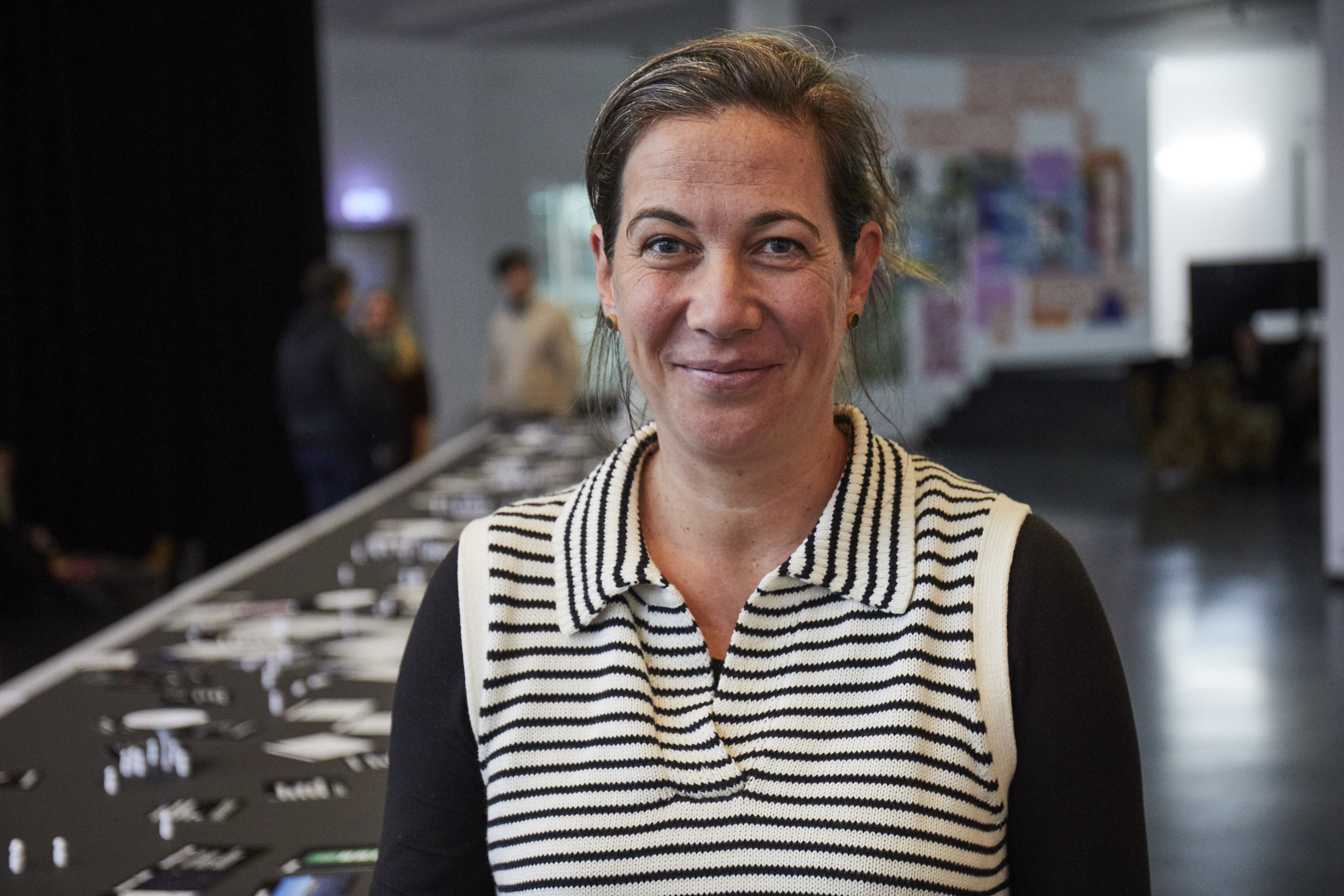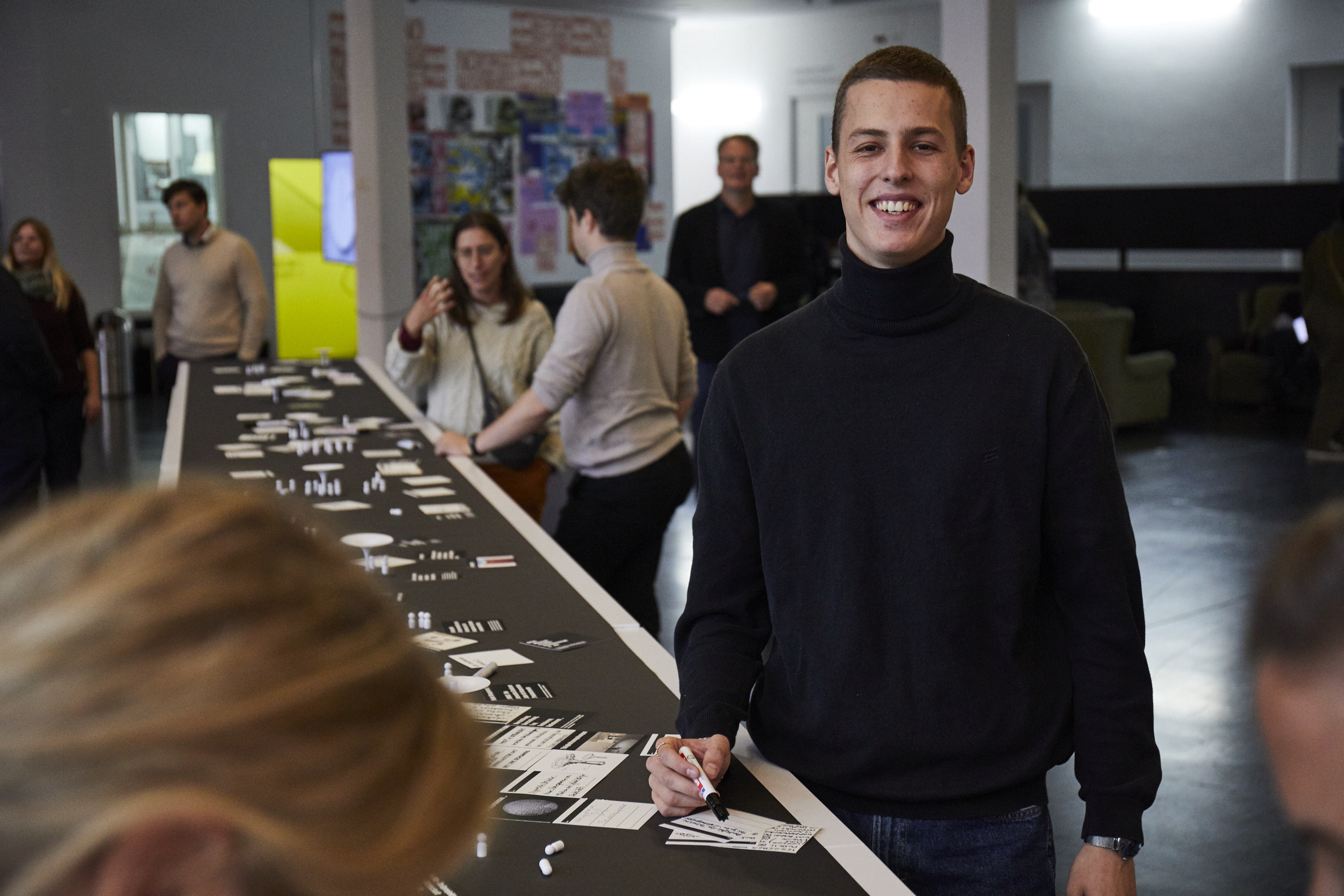interdisciplinary democracy education
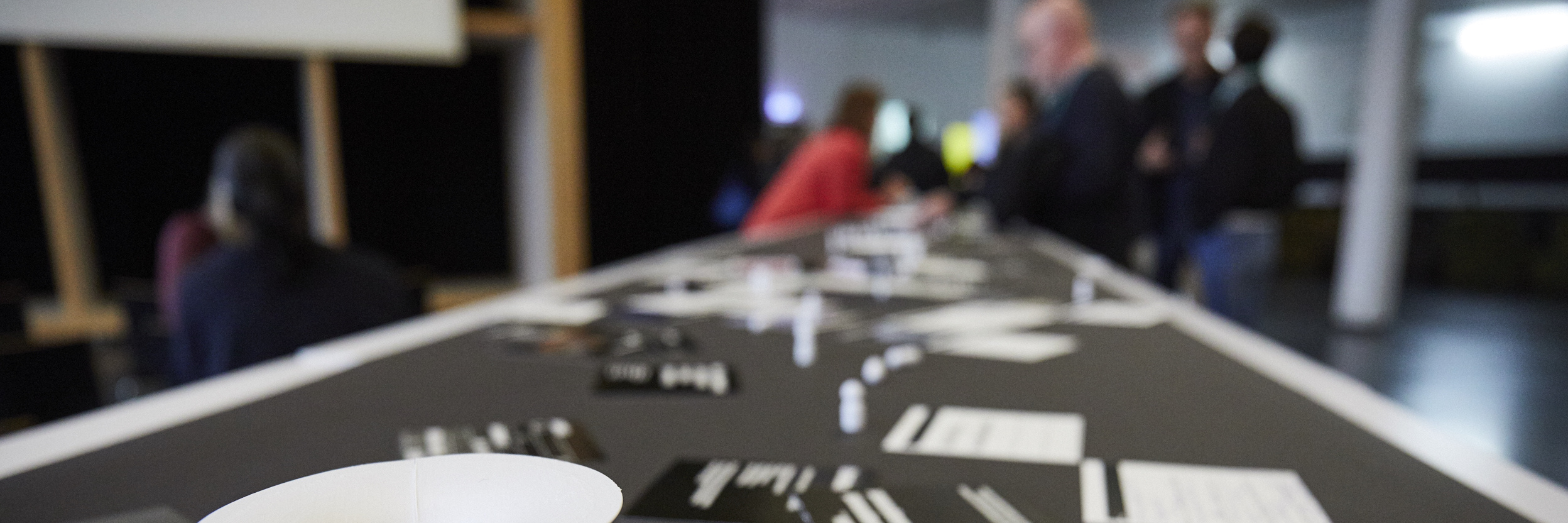
When the World Design Capital opens its doors in Frankfurt in the summer of 2026 under the heading “Design for Democracy,” the “Source” project of Darmstadt University of Applied Sciences (h_da) will also be on display there. But what visitors will experience is far more than just part of an exhibition: it is the visible result of collaboration between different disciplines that demonstrates how universities can contribute to shaping social change.
By Annette Wannemacher-Saal, 20.10.2025
150 students, 15 projects, 12 lecturers from six subject groups and five faculties – these impressive figures are evidence of a new path on which h_da embarked last semester. At the centre is collaboration between Darmstadt Business School (the Public Management study programme – PuMa) and the Faculty of Design (the Industrial Design study programme). Three people have significantly shaped this interdisciplinary approach: Sabine Winkler, Professor of Industrial Design, Friederike Edel, Professor of Public Management, who developed the innovative PuMa study programme together with Oliver Will, Managing Director of “Die Strategiemanufaktur”, strategic consultants in Karlsruhe, and Werner Stork, Professor of Organisation and Management, whose research focuses on resilience and curiosity.
Four locations, one goal
“How can we shape society together in the future? How can we strengthen a sense of community? How can we bring disappointed people back on board?” These are the questions at the centre of the projects launched by the researchers and their students on the topic of “public behaviour”. The answers are not found in the lecture hall, but where people live: in Eltville, Messel, Dannenrod and on the university campus itself. Always in close cooperation with local stakeholders.
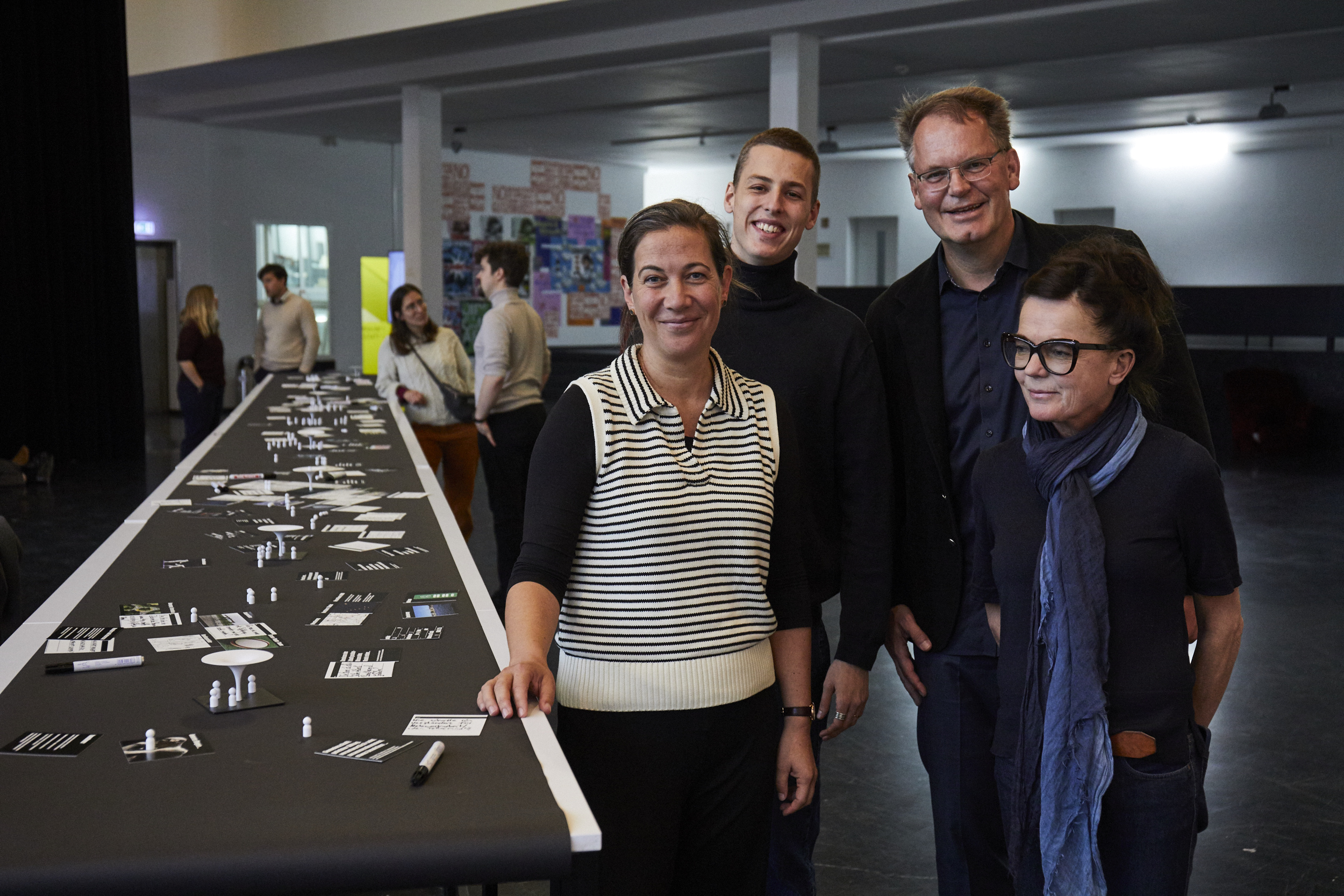
What is special is that several project groups from different disciplines are not working in isolation at the four different locations but instead networked via Public Management students in a systematic way. “We don’t want to create isolated solutions,” explains Edel. “Each location has its own ‘polestar’, a main theme for the project work. The students learn from each other, solutions are transferred and experiences shared.”
Messel: Turning conflicts into solutions
In Messel, no one had expected that – of all things – the question of a new site for a Holocaust memorial, which had been hotly debated for years, would bring the community together. Then the students arrived and brought with them a new method for decision-making. A meeting with the local citizens led not only to agreement on the new site but also something more important: the awareness that finding viable solutions together is possible. “The readiness for transformation is there because we knew that if nothing changed, it would be the end of the community,” says Thorsten Buhrmester, Mayor of Messel, who has been in office since 2022. With only ten staff, the village had been dependent on “a breath of fresh air from outside,” he adds. In the meantime, a lot is happening in Messel: the foundations for the HEiDi communication app have been laid, an umbrella organisation for local associations is being set up – Messel has developed into a “place of cooperative action and learning”.
Dannenrod: From crisis to community
When you hear “Dannenrod”, you think of treehouses, activists and the A49 motorway. But what is it like to live in a small village with a population of just 220 when 1,000 activists and the police have been camping on your doorstep for years? “What was divisive were the protests on people’s doorstep,” says Simke Ried, Mayor of Homberg Ohm, to which Dannenrod belongs.
Today, it is more a matter of how to live next to the motorway – and how the community can grow together again. The students concentrated on the situation of children and families. The result is not only plans for a larger playground but also a comprehensive concept ranging from 30 km/h zones to converting the old fire station into a children’s workshop and reactivating the sports field. “The students have provided input that with just 26 employees we could not have managed by ourselves,” says Simke Ried.
Eltville: Democracy lives from participation
That the town council in Eltville is actively getting to grips with a phenomenon that many local authorities prefer to ignore – the growing number of “angry citizens” – casts a positive light on the town. While people in other places look the other way, here they are rising to the challenge. The students helped formulate the right question: How can you reach those people who feel left behind? Their answer: new forms of participation, greater transparency in building projects, more direct communication.
“The question is, of course, how the community can grow closer together again,” says Yannik, one of the students involved. A WhatsApp group for the community has been set up, and a feasibility study for the “Heimat digital” app is planned. Particularly promising is the project “Children Design Their Town”, which will continue in the coming semester. On behalf of the Children and Youth Advisory Council, a “Platz der Kinderrechte”, a public square dedicated to children’s rights, is being created – with real participation from young people.
The university as the fourth location
The university itself is more than just the starting point for the projects – it is both a laboratory and a learning space. “Real change happens at the interfaces – between design, technology, business administration, social work and communication,” writes a student project group in its summary. This illustrates what is known as the “fourth mission” of higher education: making an active contribution to social transformation beyond research and teaching.
That interdisciplinary collaboration works can also be seen from a project in the previous semester. Katharina Konradi, an Industrial Design student, worked in a team of 16 students on the topic of illegal waste disposal in Darmstadt – in cooperation with the city and EAD, the municipal authority for waste management. Thanks to the agile Scrum project management method, where students take on distinct roles and work in subprojects, it was possible to successfully coordinate the large team.
‘We live by the quintuple helix model,’ explains Stork. This is evident in the projects: when students work together with mayors, administrative staff and committed citizens to develop solutions that are ecologically sustainable and socially viable.
From Mathildenhöhe to World Design Capital
The symbolic location for this collaboration was deliberately chosen: Mathildenhöhe in Darmstadt, a UNESCO World Heritage Site since 2021. Around 50 students, teaching staff and town mayors gathered here at the start of the semester under the heading “be a bee – come together, understand and develop”. On a long table in the foyer, Moritz Reutner and Joschua Ries, Industrial Design students, had set up the game “Spiel der Gesellschaft” they had developed – with playing cards and figures that invited discussion about the projects and demonstrated – in a playful way – what networking means.
“Mathildenhöhe is a place where, at the beginning of the 20th century, new ideas were born and put into practice with the aim of creating a better world,” says Mike Richter, Dean of the Faculty of Design. Art Nouveau emerged as a response to the Industrial Revolution – as a search for “public behaviour” based on democratic principles. “The process that began back then continues today.” At World Design Capital 2026 too: an object developed by Sabine Winkler and her students on the theme of “Source” – sources of community – will be on display there. “We want to create spaces where people can really come together,” explains Winkler, who has been working freelance on concepts and product development since 1996 and is building national as well as international networks. The “Sources” are designed as umbrella-like structures that provide shade, collect and distribute rainwater, and provide fresh drinking water. Above all, however, they create spaces that invite people to linger. Scalable, flexible, transferable to other cities and communities. “It’s about transitions – about spaces that facilitate encounters,” says Winkler.
Bringing together the academic world and politics
That the university and the local authorities are able to work so closely together is also thanks to Thorsten Herrmann, former mayor, member of the Innovators Club of the German Association of Towns and Municipalities and co-founder of the “KommunalHub”. As a lecturer at h_da, he knows both sides: the academic world and everyday life in politics and administration. “To master the problems facing us in the future, we need to network, we need knowledge about what awaits us in the future and we need new professionals,” says Herrmann. At the “KommunalHub”, students work hand in hand with practitioners from local authorities on strategies for implementing concrete projects that have a direct benefit for citizens.
Another key figure is Oliver Will from “Die Strategiemanufaktur”, strategic consultants in Karlsruhe. His concept of “attitude as a cooperative skill” shapes the project: “Innovations are produced at the interfaces between stakeholders who have not previously worked together.” In his studies on the town hall as an important place for feedback (ResonanzRaum Rathaus), Will describes how local authorities must become places of continuous dialogue. “New forms of collaboration must be tested in practice – agilely and iteratively.
From project to movement
“Our project is not a finished product but a prototype,” write the students. “It has the potential to grow, inspire others and trigger structural change.” That is precisely the idea behind this new approach: the university becomes a platform, the campus a real-world laboratory and the students designers of social change. “It is clear that students emerge from such projects with greater self-confidence,” Edel observes. As the qualified professionals of tomorrow, they are urgently needed in local administration – not only those who “keep the machine running” but also university graduates “who build bridges between disciplines and help to change structures so that work can be done in a more networked way.”
Here, trust-based cooperation with the town mayors is essential. “If you don’t have time for change, you make mistakes,” says Thorsten Buhrmester from Messel. Simke Ried from Homberg Ohm agrees: “We needed a breath of fresh air from outside – and the students provided that input. “What is happening in Eltville, Messel, Dannenrod and on the h_da campus is more than just a university project. It is a model of how science, administration and civil society can work together to strengthen democracy – through design, through dialogue, through action.
Contact our Editorial Team
Christina Janssen
Science Editor
University Communications
Tel.: +49.6151.533-60112
Email: christina.janssen@h-da.de
Translation: Sharon Oranski
Photography: Jens Steingässer
Information on study programmes
Study programme website: Public Management
Study programme website: Industrial Design
Study programmes at Darmstadt Business School
